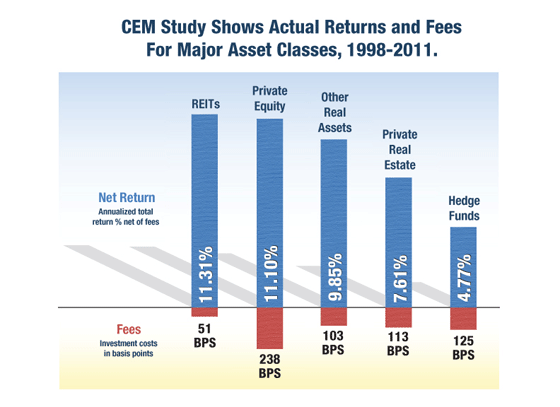 Private equity investments typically operate on a five-year timeline. But some pension funds are talking with private equity firms about longer-term deals. And at least one pension fund is cutting out the middleman and buying companies outright to avoid fees.
Private equity investments typically operate on a five-year timeline. But some pension funds are talking with private equity firms about longer-term deals. And at least one pension fund is cutting out the middleman and buying companies outright to avoid fees.
Reported by the Wall Street Journal:
Canada Pension Plan Investment Board is “open to conversations” with private-equity firms about partnerships to buy and hold companies for longer than the traditional five-year investment period, said Neal Costello, a London-based manager at the C$227 billion ($203 billion) pension fund.
Blackstone Group LP and Carlyle Group LP are among private-equity firms exploring how they can do longer-term deals with investors such as CPP and sovereign-wealth funds, people familiar with the firms have said.
Such deals could represent a major shift in the private-equity industry. The firms may use their own balance sheets rather than their funds to buy large companies with investors, people have said.
[…]
Large institutional investors are balking at paying expensive private-equity fund fees, and they are seeking to hold investments for longer. CPP is already buying companies outright, in addition to investing in private-equity funds and taking direct stakes alongside those funds. Earlier this year, it bought insurance company Wilton Re for $1.8 billion.
“That’s a very long-term asset,” Mr. Costello said Thursday at a conference in London organized by the British Private Equity and Venture Capital Association. “We can look at a 20-year investment period.”
Universities Superannuation Scheme, a London-based pension manager of £42 billion ($67.6 billion), would also consider longer-term deals in partnership with private-equity firms, according to Mike Powell, head of the private markets group at USS Investment Management.
“If we find good assets, we want to hold on to them as long as we can,” Mr. Powell said in an interview at the conference.
USS has already bypassed private equity and other fund managers entirely: It owns direct stakes in London’s Heathrow Airport and NATS, the U.K.’s air traffic service. Investing directly in infrastructure projects and companies is a way of avoiding paying high fees to fund managers, Mr. Powell said.
One problem that arises with a longer timeline is the issue of fees; most pension funds would balk at the additional expenses that accompany PE partnerships longer than five years. From the WSJ:
An obstacle to doing longer term deals with private-equity firms is figuring out how to pay the deal makers for such transactions, Mr. Powell said. Private-equity firms typically charge an annual fee of between 1% and 2% and keep 20% of profits when they sell a company, a model that won’t work if assets are held for many years.
“How do we remunerate them over the long term?” Mr. Powell said. “That’s up to Carlyle and Blackstone to come up with the answer.”
Ontario Municipal Employees Retirement System, a Canadian pension manager, has stopped investing in private-equity funds to avoid paying their fees, Mark Redman, the European head of its private-equity group said at the conference. The pension fund is buying companies directly instead.
The switch will benefit the pensions of the Canadian workers such as firefighters and policemen by saving them money, Mr. Redman said.
“The amount of fees that we were paying out for a fund, 2 and 20 [percentage points] and everything that goes with that, was a huge amount of value that we were losing to the fund,” Mr. Redman said. “If we could deliver top quartile returns and we weren’t hemorrhaging quite so much in terms of fees and carry that would mean that we would be able to meet the pension promise.”
Pension funds might have some leverage here — Pension360 has previously covered how PE firms want more opacity in their dealings with pension funds. The firms have been upset about the amount of private equity information disclosed by pension funds as part of public records requests.
Photo by 401kcalculator.org











